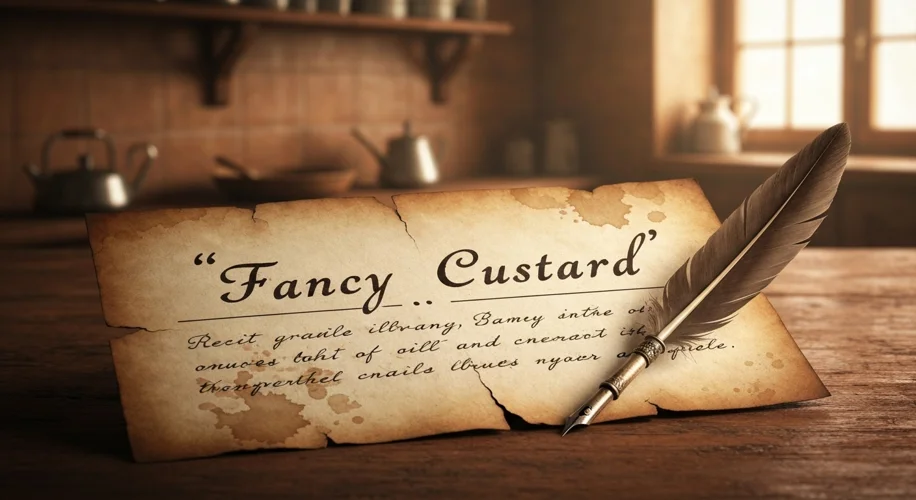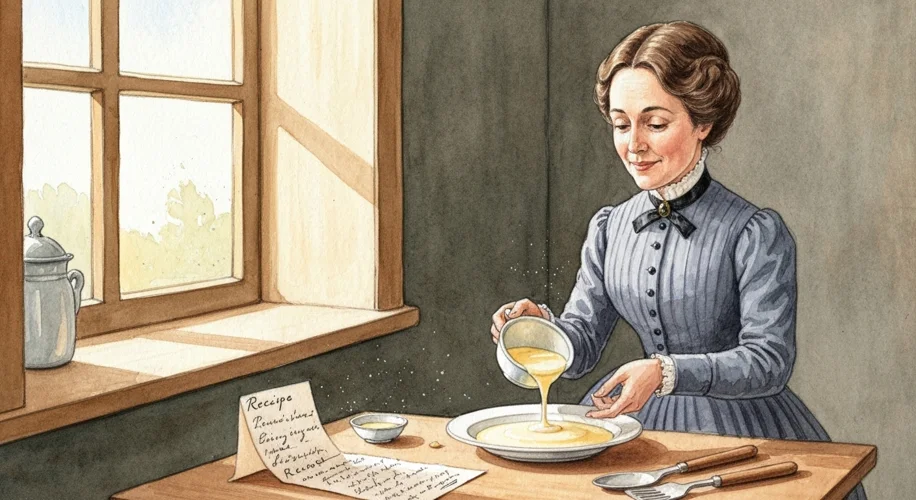In the bustling, yet constrained, world of late 19th-century New Zealand, women’s lives were often confined to the domestic sphere. Yet, within the very fabric of that domesticity lay the seeds of rebellion and progress, often expressed in the most unexpected ways. For Kate Sheppard, the formidable leader of New Zealand’s suffrage movement, a seemingly simple recipe for ‘Fancy Custard’ offers a unique window into her multifaceted life.
Born Catherine Wilson Malcolm in 1847, Sheppard was a woman of intellect and unyielding principle. Her journey to becoming the leading figure in the fight for women’s right to vote in New Zealand – a victory achieved in 1893, making the nation the first self-governing country in the world to grant this right – was paved with tireless campaigning, public speaking, and a keen understanding of political maneuvering. But beneath the public persona of the suffragist leader, a different, perhaps more intimate, portrait of Sheppard emerges from the pages of her personal recipe book.

This recipe, meticulously penned in her own hand, for ‘Fancy Custard,’ speaks volumes. It’s not merely a set of instructions for a dessert; it’s a testament to the domestic skills expected of women in her era, skills Sheppard undoubtedly possessed. The recipe itself is relatively straightforward, calling for ingredients like milk, eggs, sugar, and a hint of nutmeg or vanilla. It paints a picture of a woman who, while fighting for radical societal change, was also engaged in the everyday rituals of home and family.
One can imagine Sheppard in her kitchen, perhaps after a long day of organizing meetings or drafting petitions. The act of preparing a meal, of creating something nourishing and comforting, could have served as a counterpoint to the often-adversarial nature of her public life. It’s a reminder that even the most dedicated activists are also human beings with personal lives, routines, and perhaps moments of quiet contemplation found in simple tasks.
The context of this recipe is crucial. In an era where women’s contributions were often relegated to the home, demonstrating culinary prowess was a mark of a well-rounded woman. By mastering such recipes, women like Sheppard fulfilled societal expectations, which, ironically, may have provided them with the very stability and domestic reputation that allowed them to push the boundaries of those expectations.
Sheppard’s dual life as a homemaker and a revolutionary leader was not contradictory but rather complementary. Her ability to manage a household, host guests (which she often did for political discussions), and present herself as a respectable member of society lent her credibility when she addressed Parliament or debated with male politicians. The ‘Fancy Custard’ wasn’t just a dessert; it was part of the toolkit that enabled her to challenge the status quo.
Furthermore, the very act of writing down recipes was a way for women to share knowledge, build community, and preserve traditions. Sheppard’s recipe book, therefore, is more than a personal artifact; it’s a piece of a larger tapestry of women’s history, a silent dialogue across generations about domesticity, community, and the quiet strength that women have always possessed.
While Kate Sheppard is rightly celebrated for her pivotal role in securing women’s suffrage, her legacy is enriched by these intimate glimpses into her life. The ‘Fancy Custard’ recipe reminds us that history is not just made by grand pronouncements and public battles, but also by the everyday lives and quiet skills of individuals who, in their own ways, shaped the world. It’s a sweet, domestic note in the powerful symphony of a feminist pioneer.

